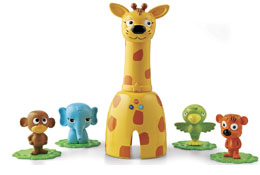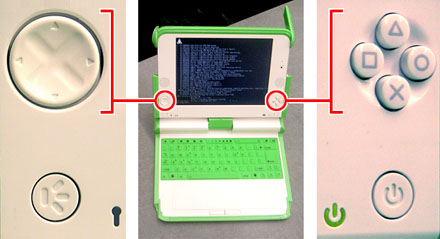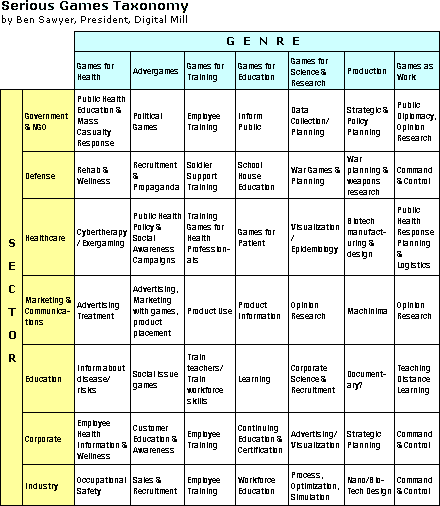My company, 360KID, watches over trends in the kids’ space very closely; it’s one of the things we do best. We know our end users, and we follow the research that helps support new trends yet to be pioneered. 360KID also keeps a close eye on technology, gaming, education, and generational trends because what happens in these additional areas also has an impact on children’s lives. What trends are we currently watching and projecting five years out? Specific trends in the technology space include: social networking, toys, video games, education, and computing.
Social networking sites are currently the biggest and hottest trend for kids today. They’re great destinations for growing virtual communities. A few of the most popular online destinations include Club Penguin, Star Doll, Barbie Girls, Webkinz, and Runescape to name a few. As social networking services and products continue to evolve, and specific kid-focused enterprises use social networking technologies as a powerful tween connector, new social networking capabilities yet discovered will be combined to create even more engaging, lasting, and sticky experiences for kids. Currently, social networking is confined to a computer/Internet experience, but it could be possible for this form of entertainment to migrate to cell phones. More than 27% of kids ages 8 – 12 have their own cell phone. That number is expected to double by 2010. However, due to a lack of cell phone technology standards within the US, social networking technologies may not become commonplace on all cell phones unless the technology landscape shifts. For example, if the FCC made analog television signals available for non-emergency network uses through wireless everywhere initiatives, this could ultimately benefit not just computer experiences, but also cell phones and other tech devices.
The toy industry within the US will continue to hover at the $22 billion mark in the years ahead, but what will change is one specific segment of the toy industry, that being the youth electronics category. This year the NPD Group, a leading research firm in the video game and toy industries, projected a 23% growth in youth electronics. (Youth electronics is just one of 11 different “supercategories” in the toy space. Other supercategories include action figures, arts & crafts, dolls, vehicles, etc.) Many experts in the toy industries, as well as the electronics world, believe the toy industry is transforming into its own unique consumer electronics industry. While it’s expected that many popular technology toy products like digital games and plug-and-play TV toy devices will continue to deliver their “toy” magic, microprocessors are finding their way into My Little Pony dolls, Hot Wheels toys and many other traditional, non-technical toy products. Those in the toy industry often refer to Moore’s Law, the idea that microprocessors double in computer processing power every 24 months, as being on steroids in the toy space. An “echo” of this law, starting with the oldest and cheapest microprocessors, is working its way into everyday technology kids use every day.
Another technology trend that will have significant impact on computing, technology toys and technology used in the classroom is the One Laptop Per Child (OLPC) initiative, sometimes referred to as the $100 laptop. This has been spearheaded by Nicholas Negroponte at MIT’s Media Lab. The goal of OLPC is to put a low cost laptop in the hands of every child on the planet for educational purposes (every child that is except those found within the US.) The number of laptops OLPC wishes to give away is 150 million units. By this coming fall season, the first 3 – 5 million, low cost laptops (averaging $175 per unit) will begin shipping to early adopter countries around the globe. Even if the OLPC initiative only partially succeeds, its boldness is forcing many companies (Microsoft with the Student Innovation Suite, Intel with the Classmate PC, Dell, Gateway and others), institutions (US Department of Education and other education institutions and ministries around the globe), and even toy companies to rethink everything. For example:
- Will OLPC create consumer demand for powerful computers that cost less than $100?
- Since education within the US is in drastic need of an overhaul, how will the constructionist learning approach surrounding OLPC laptops influence the institutionalized instructivist conversation within the US?
- Since OLPC is an open platform relying primarily on an open source operating system and software, how will this influence consumer-based operating systems and consumer software as we know it?
- If a reasonably powerful computer can be created for $100, can an electronic toy manufacturers create a powerful toy computer for $50? Could there someday be such a thing as Winnie the Pooh’s first computer that’s affordable and actually works like a real networked computer?
The video games industry, and specifically momentum currently being experienced in the Learning Games or Serious Games sector of the video games industry, is an important trend to follow. Many noteworthy academics and consumer video games experts are all exploring video games as a vehicle for learning. While great strides have been achieved in the last three years, this movement is still relatively young in it’s history. What’s exciting to watch is the number of video game companies exploring new ways to deliver learning messages and educational content. What is learned in this specific video game sector has great implications about what kinds of learning material might more easily be learned in the future. And as kids young and old spend more time playing video games with every passing year, this movement suggests how future tech savvy youngsters might be spending their free time.
The education sector continues to feel accountability pressure from the No Child Left Behind (NCLB) mandate. Even if this mandate is not reauthorized this year, 33% of the teacher work force (aging baby boomers) are planning to retire within 5 years, and the attrition rate for new teachers continues at its current level of 50% within 5 years for all new teachers. If these two trends are combined with the small projected spike coming in the student population, class sizes will grow as the availability of experienced teachers shrinks significantly.
In order for teachers to help each of their own students learn according to their own individualized needs, technology in the classroom will prove to be an essential component of everyday instruction. Future products will not just provide individual, classroom, school and district wide achievement data, but it will also allow for a level of customization and individualized instruction that is badly needed in today’s education environment.
One thing becomes clear when developing innovative and creative ways to engage kids. Kids have always been the same. Throughout the years. Throughout the decades. Throughout all time. It’s the society around kids that changes constantly. Changes in communication, government, education, places of worship, healthcare all have an impact on the experience of childhood. Watching these and many other trends is one of the best ways to create products that can really make a difference in every child’s life.
Average Rating: 4.7 out of 5 based on 223 user reviews.
 Last year I wrote about a tech toy product called Hyper Dash developed by the toy company Wild Planet. Hyper Dash is an electronic game that allows one user to hide up to five hockey puck sized targets, indoors or out, and another person can search for these targets with the help of a talking controller. I thought this was a brilliant use of RFID, a technology that relies on small paper thin microchips that can be detected within short distances via the radio frequencies they emit. (So when will this technology become standard in all car keys? Imagine the time we could all save each morning trying to find them!)
Last year I wrote about a tech toy product called Hyper Dash developed by the toy company Wild Planet. Hyper Dash is an electronic game that allows one user to hide up to five hockey puck sized targets, indoors or out, and another person can search for these targets with the help of a talking controller. I thought this was a brilliant use of RFID, a technology that relies on small paper thin microchips that can be detected within short distances via the radio frequencies they emit. (So when will this technology become standard in all car keys? Imagine the time we could all save each morning trying to find them!)


